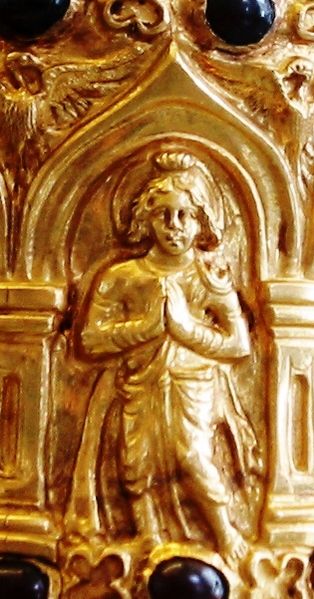Manjushri is a bodhisattva who represents prajñā of the Buddhas in Mahāyāna Buddhism. The name "Mañjuśrī" is a combination of Sanskrit word "mañju" and an honorific "śrī"; it can be literally translated as "Beautiful One with Glory" or "Beautiful One with Auspiciousness". Mañjuśrī is also known by the fuller name of Mañjuśrīkumārabhūta (मञ्जुश्रीकुमारभूत), literally "Mañjuśrī, Still a Youth" or, less literally, "Prince Mañjuśrī". Another name of Mañjuśrī is Mañjughoṣa.
Mañjuśrī Pala Dynasty, India, 9th century CE
Manjushri statue, Lhalung Gompa, Spiti Valley, India
Manjushri, seated on a blue lion at Buddha Tooth Relic Temple and Museum, Singapore.
Bodhisattva Monju (Manjushri), Kamakura period, Tokyo National Museum, Japan
In Buddhism, a bodhisattva or bodhisatva is a person who is on the path towards bodhi ('awakening') or Buddhahood.
A relief depicting Avalokiteśvara Bodhisattva in Plaosan temple, 9th century Central Java, Indonesia.
Probable early image of a bodhisattva (Bimaran casket, 50 CE)
Gandharan relief depicting the bodhisattva (future Gautama Buddha) taking a vow at the foot of Dipankara Buddha, Art Institute of Chicago
6th century painting of Maitreya, Kizil Caves, Cave 224








